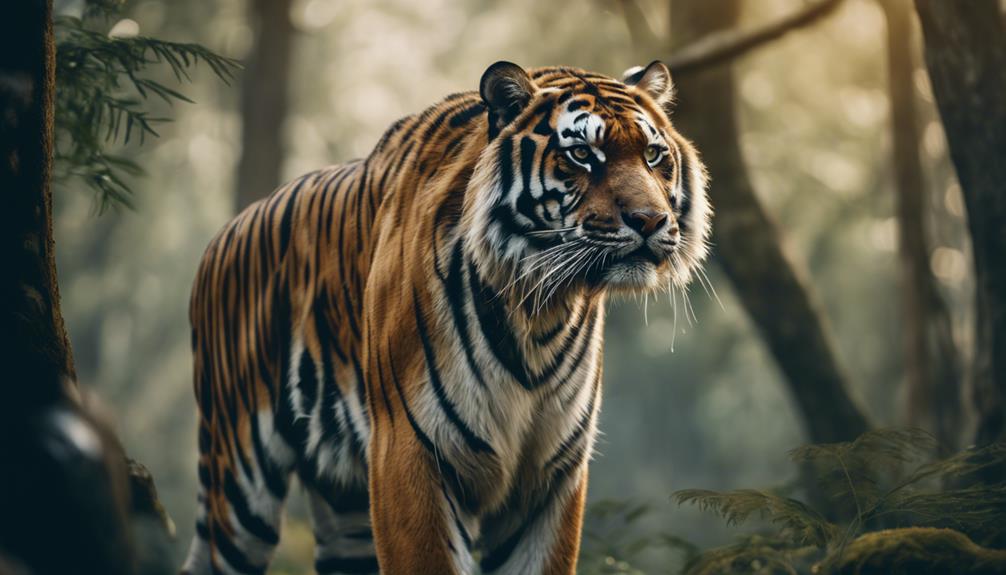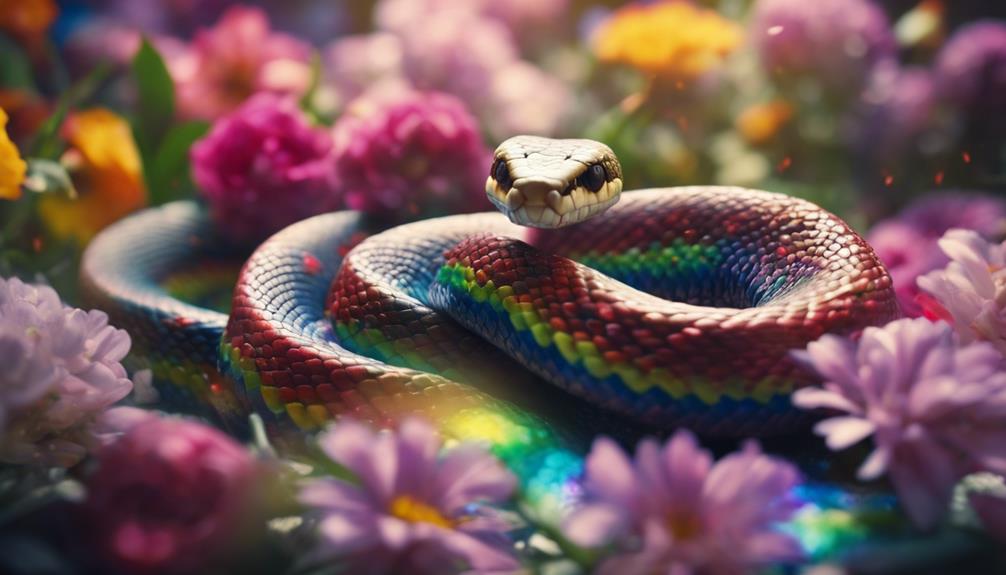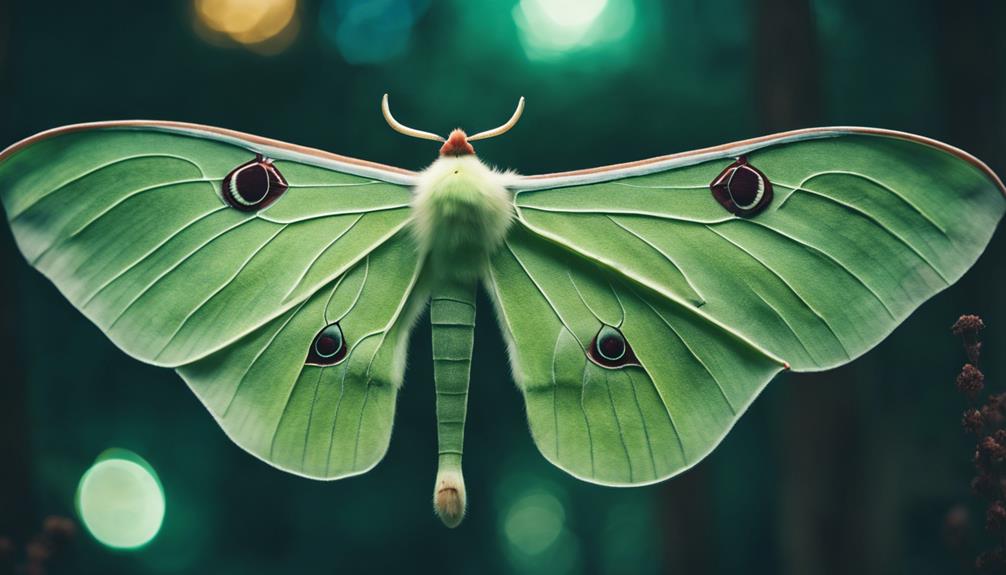The **tortoise** stands for protection and long life in Feng Shui, showing stability and strength. **Birds** hint at freedom, vision, and communication, with **owls** adding wisdom and clarity. In Chinese culture, **dragons** are powerful and bring good fortune, symbolizing vitality and prosperity. **Tigers** mean power, strength, courage, and protection, and the rare **white tiger** shows amazing bravery. **Snakes** mean change, rebirth, and healing, with their shedding skin showing renewal and wisdom. Each **animal** carries deep meanings across cultures, weaving a rich tapestry of symbols worth exploring.
Key Takeaways
- Tortoise symbolizes protection, longevity, and stability in Feng Shui.
- Birds embody freedom, vision, and communication, with owls symbolizing wisdom.
- Dragons represent power, good fortune, vitality, and prosperity in Chinese culture.
- Tigers symbolize strength, courage, protection, and agility, known as the king of beasts.
- Snakes symbolize transformation, rebirth, healing, wisdom, and intuition in various cultures.
The Tortoise Symbolism
Symbolizing protection and longevity across various cultures, the tortoise holds significant symbolic meaning. In Feng Shui, the tortoise represents stability and fortification, making it a popular choice for those seeking protection in their lives. Associated with the element of water and the north direction, the tortoise embodies qualities of resilience and strength.
In Chinese astrology, it's considered a celestial animal, symbolizing wisdom and endurance. Often depicted with a snake, the tortoise signifies harmony and balance in the spiritual domain. Its slow and steady nature reflects a deep connection to the spirit world, where it's believed to offer guidance and protection to those in need.
Those drawn to the tortoise's energy seek its wisdom and longevity, embracing the spirit of this ancient creature as a symbol of strength and perseverance in the face of life's challenges.
The Bird Symbolism

Birds embody a sense of freedom, vision, and communication in diverse cultures worldwide. They symbolize new perspectives and act as a guidance system, offering insight into various aspects of life.
The owl spirit, for example, represents wisdom and the ability to see beyond the surface, providing clarity and understanding. Birds are deeply connected to nature and the earth, reminding us of our roots and the importance of staying grounded.
In many traditions, encountering a bird is considered a sign of good luck, bringing positive vibes and blessings. Their keen vision allows them to perceive things that aren't immediately apparent, encouraging us to look beyond the obvious and gain enlightenment.
Through their songs and calls, birds also facilitate communication, both between themselves and with humans, fostering a sense of connection and unity. Overall, birds serve as messengers of inspiration, encouraging us to soar to new heights and explore the vast possibilities that lie ahead.
The Dragon Symbolism

The Dragon, a revered symbol in Chinese culture, embodies power, strength, and good fortune. It's associated with the East direction, representing vitality and life force.
Here are some key points about the Dragon:
- Auspicious Symbol: Dragons are revered for their protective qualities and auspicious symbolism in Chinese culture.
- Feng Shui Significance: In Feng Shui, the Dragon is believed to bring optimism, growth, and prosperity to the environment it inhabits.
- Imperial Power: The Dragon is seen as a celestial being that embodies imperial power and divine energy.
The Dragon's significance goes beyond mere representation; it symbolizes the essence of life force and vitality, bringing good fortune and strength to those who embrace its power. In Chinese culture, the Dragon is a crucial symbol of auspicious energy, highlighting the importance of power, prosperity, and protection in the journey of life.
The Tiger Symbolism

With a majestic presence and revered status in various cultures, tigers symbolize power, strength, courage, and protection.
In China, they're considered the king of all beasts, embodying unparalleled strength and majestic prowess.
The Hindu god Shiva is often depicted with a tiger skin, highlighting the animal's significance in symbolizing power and protection.
Tigers aren't just symbols; they're powerful creatures in their own right, known for their agility and hunting skills.
The rare white tiger, a genetic variant, is also a symbol of strength and courage.
India's Ranthambore National Park stands as a prime tiger safari destination, offering a glimpse into the natural habitat of these magnificent animals.
Despite their symbolic and real-world importance, wild tiger populations are dwindling, with approximately 4,500 individuals remaining, facing ongoing threats to their survival, making conservation efforts vital for their continued existence.
The Snake Symbolism

Symbolizing transformation, rebirth, and healing across various cultures and mythologies, the Snake holds significant spiritual and symbolic meaning. In ancient Greek mythology, snakes were revered for their association with healing and renewal through the shedding of their skin. Additionally, these creatures are often viewed as symbols of fertility, creativity, and life force energy due to their remarkable ability to regenerate and transform. In Hinduism, the snake symbolizes Kundalini energy, signifying spiritual awakening, transformation, and enlightenment.
- Snakes shed their skin, symbolizing rebirth and renewal.
- In various cultures, snakes are associated with fertility, creativity, and life force energy.
- Hinduism views snakes as representations of spiritual awakening and transformation through Kundalini energy.
Throughout history, the Snake has been a powerful symbol of wisdom, intuition, and profound transformative change. Embracing the symbolism of the snake can offer individuals a deeper understanding of the cycles of life, transformation, and healing.
Frequently Asked Questions
What Do Different Types of Animals Symbolize?
Different types of animals symbolize various qualities and traits. They carry meanings that represent strength, loyalty, intelligence, protection, fortune, wisdom, stability, success, courage, leadership, confidence, and personal growth.
These symbolic representations are significant in different cultures and traditions, reflecting values such as wisdom, intuition, insight, nurturing, and living in harmony with nature. Animals serve as powerful symbols that convey deep meanings and embody a range of virtues.
What Do Animals Represent Spiritually?
Animals represent various spiritual qualities like strength, wisdom, courage, protection, and transformation. Each animal embodies symbolic meanings that guide individuals on their spiritual journey, aiding in personal growth and self-discovery.
Connecting with animals spiritually offers insight into innate traits, inspiring individuals to access their inner strengths. Through this connection, people gain guidance, support, and a deeper understanding of themselves and the world around them.
What Is the Symbol of the Wise Animals?
Owls are often seen as the symbol of wise animals. They represent wisdom, intuition, and knowledge, encouraging individuals to look beyond the obvious and seek deeper understanding.
Owls guide people towards accessing their inner wisdom and maneuvering through life with clarity. Their symbolic power emphasizes the importance of insight in decision-making processes, inspiring individuals to embrace their intuitive abilities and see through life's complexities with a clear vision.
What Is the Most Powerful Animal Symbol?
The most powerful animal symbol is the Yellow Dragon of the Center in Chinese culture. It's associated with rich harvests, invincibility, and divine blessings.
In Chinese astronomy, this celestial beast symbolizes earth, the center, heaven, and the sun. Its significance lies in embodying strength, power, and auspicious energy.
The Yellow Dragon holds a prominent position among the celestial animals, representing balance and strength in Chinese beliefs.
Are the Symbolic Meanings of Butterflies Similar to Other Animals?
Butterflies share similarities in types of butterfly symbolism with other animals. Transformation, growth, and beauty are common themes across various cultures and belief systems. Like other animals, butterflies are often seen as spiritual messengers and symbols of renewal and hope.
Conclusion
To sum up, the symbolic meanings of the Tortoise, Bird, Dragon, Tiger, and Snake are truly fascinating. Each animal represents unique qualities and characteristics that hold deep significance in various cultures around the world.
From the slow and steady wisdom of the Tortoise to the fierce and powerful nature of the Tiger, these animals offer valuable lessons and insights that can inspire and guide us in our own lives.











